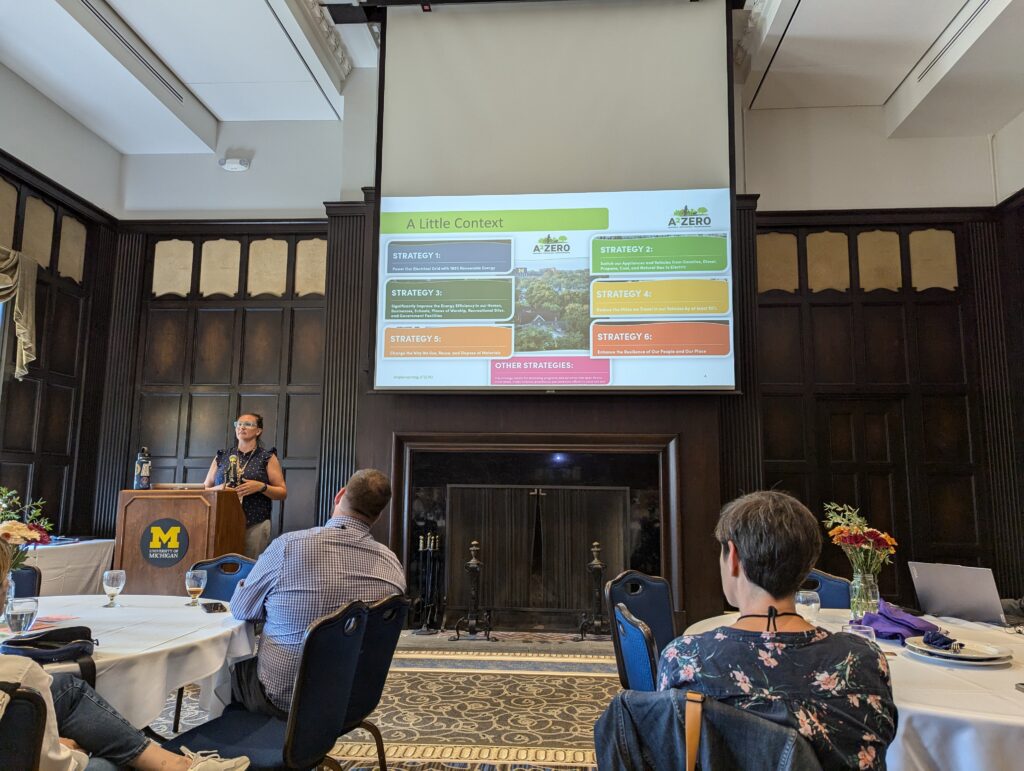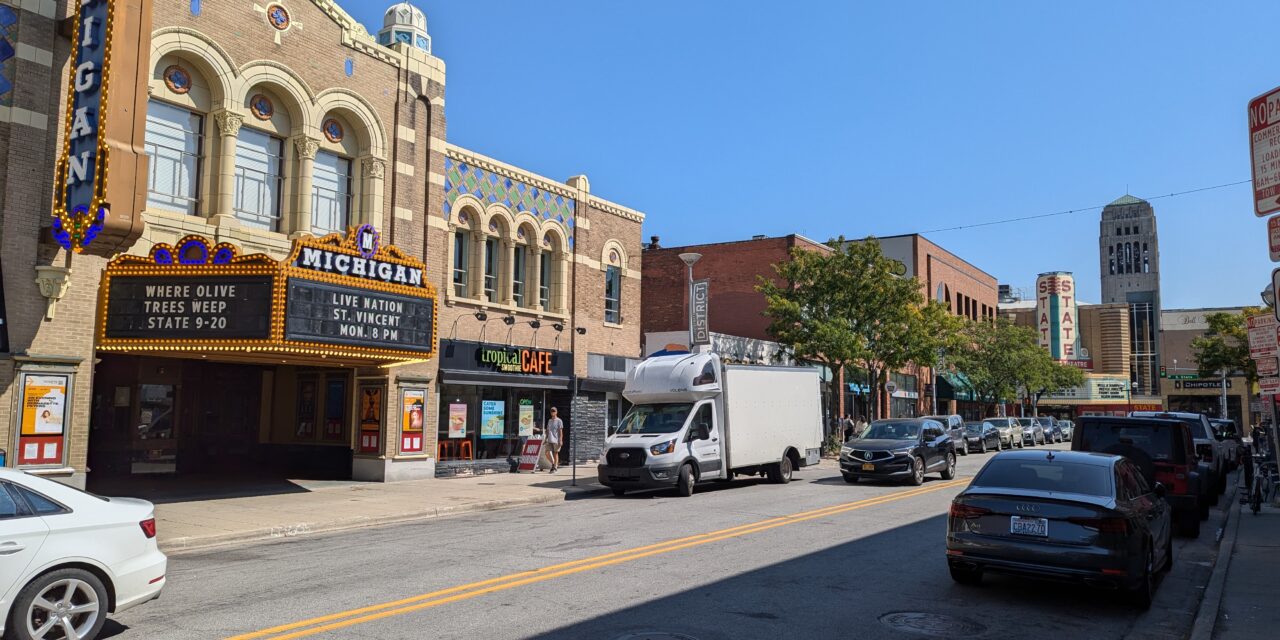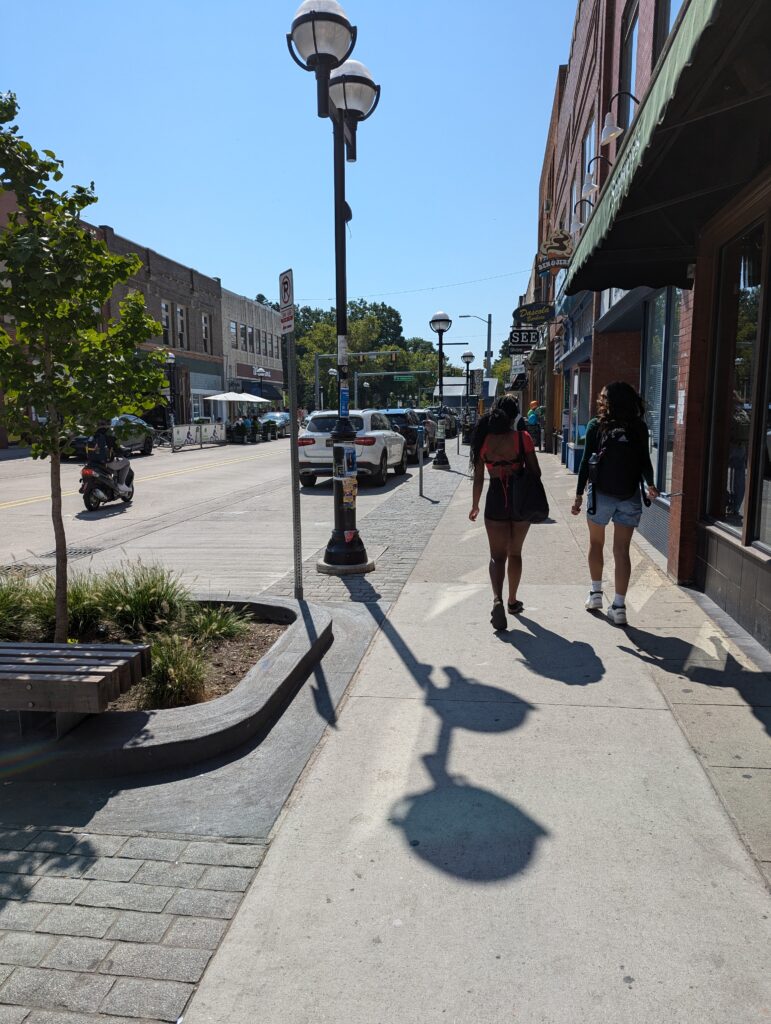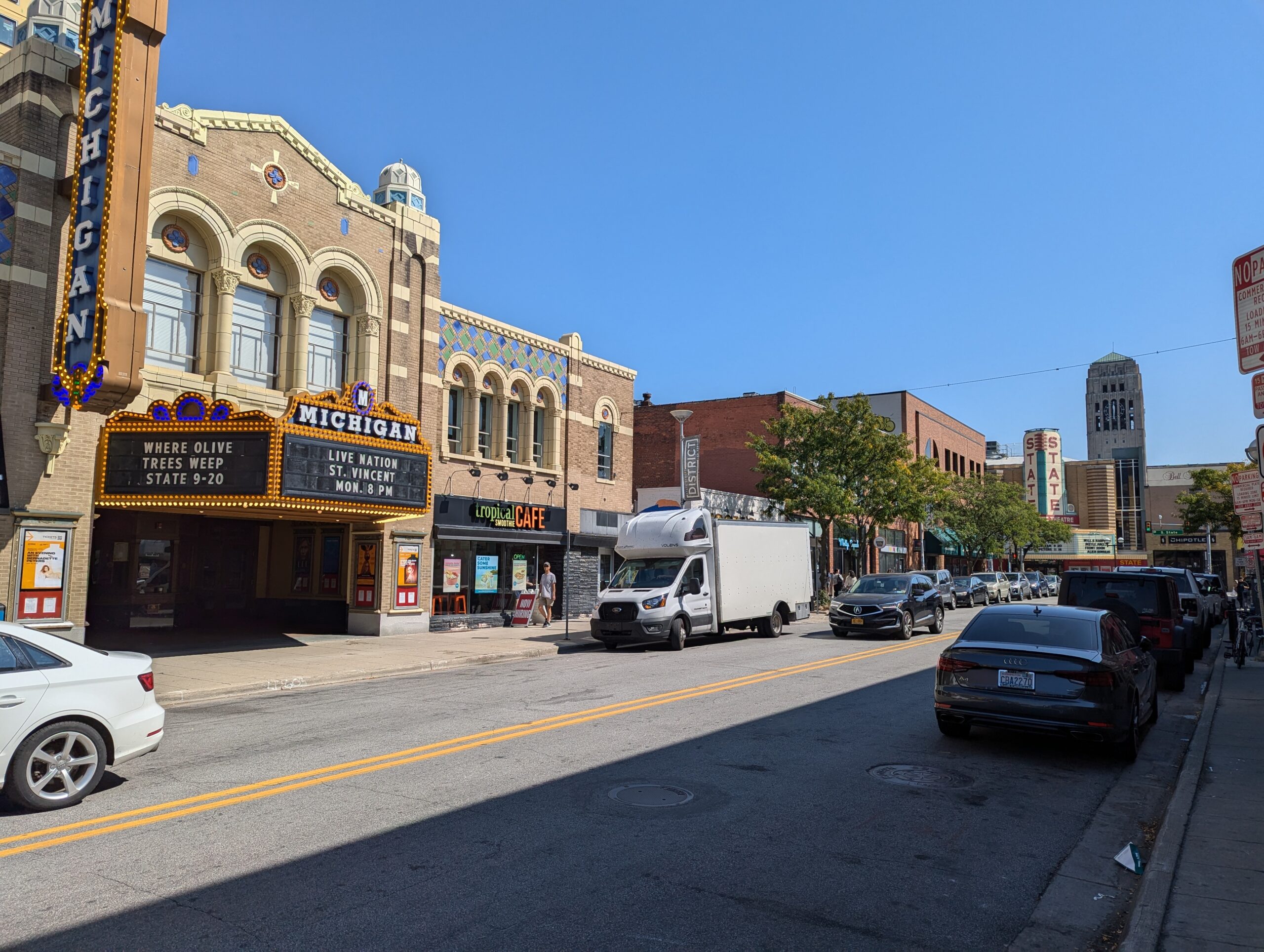Every two years, the Chamber for a Greater Chapel Hill-Carrboro hosts an Inter-City Visit (ICV) – inviting government officials, business leaders, and other local notables to spend two days in another college town, meeting with their officials, leaders, and notables to learn how they address their issues and draw lessons to help us deal with our own issues back home.
This year’s ICV was in Ann Arbor, Michigan – and 97.9 The Hill’s Aaron Keck was with the group. Here is his chronicle of the experience.
A month out from the 2024 Inter-City Visit, what are the takeaways that still linger?
Well, first of all, I learned firsthand that the Chapel Hill-Carrboro town council rivalry is real. Trivia night got heated, y’all. You thought UNC and Duke had exciting battles.
Beyond that, though: what lessons from Ann Arbor can we actually take back and implement here?
Chamber president Aaron Nelson posed a good fill-in-the-blank question on our second day: “We will know we are successful when…what?” In other words: what needs to be in place, for us to look around our community and say “Yes, we’ve achieved our goals” or “Yes, we’re living up to our values”?
Some of our goals, we’ll never fully ‘attain’: democracy, equality, freedom, inclusiveness. These are always works in progress, with no specific end point.
One such goal is downtown vitality. We want Chapel Hill/Carrboro to have a vibrant downtown, but what exactly does that entail? “We will know we are successful when…what?”
Ann Arbor’s got some ideas that we could consider. All over downtown, the whole trip, we noticed a surprising number of street performers, something I’ve wanted to see more of in Chapel Hill for years. The city facilitates that by opening up the streets, in several ways. Some downtown blocks are ‘curbless,’ which facilitates pedestrian travel and makes the whole streetscape feel more open. And every weekend, the city closes some downtown blocks to vehicle traffic, allowing people to walk freely.
Could we ever do that last one in Chapel Hill? Franklin and Rosemary Streets are too vital for vehicle transit; it’s always a massive undertaking to shut them down – but how about Graham Street? Church Street? Henderson? Those are already vibrant blocks, between Franklin and Rosemary: could we make them even more alive and buzzing, by opening one of them up every week or month and routing pedestrians their way? Outdoor arts vendors, maybe? Set up a stage with a live band?
Or could we pick up on a different Ann Arbor idea: providing housing for local artists? We all walked away from the ICV feeling pretty good about our arts scene, but our community does have a massive problem with “Chapel Hill” and “Carrboro” artists having to live way out of town in order to afford rent. Ann Arbor’s taken steps to address that issue, by partnering with local arts organizations to provide designated housing. Considering how much we depend on our local artists to give our community its character and life, that’s an idea worth looking into.
And if we’re already talking housing, that raises some other goals that might be a bit easier to measure.
For instance: can we reduce the number of people who have to commute into Chapel Hill/Carrboro for work every day? Or increase the percentage of town staff, and police, and CHCCS teachers, who actually live in town?
That means improving our housing stock, bringing down costs, and building homes for families as well as young professionals and students and retirees.
How’s Ann Arbor doing there? No better than we are, sadly: roughly 80,000 people commute into town for work every day, which is way more than Chapel Hill. (To be fair, it’s also a much bigger city.)
But they have implemented some good ideas. One housing official told us about their “gray box” approach to the development process: when a developer comes forward with a proposal, rather than getting bogged down in intricate details early on, the city starts by asking two questions only: how tall do you want the building to be, and how far do you want it set back from the road? Based on the developer’s answers, officials put a ‘gray box’ on their 3-D map of the city, just to make sure the size is a good fit – and then start working out the details from there. Not a bad thought.
Another key factor, when it comes to housing in a college town: how willing of a partner is the university? The University of Michigan has recently built new dorms, which eases the crunch of students looking to live off-campus. Back home, Chapel Hill officials have long been pushing UNC to leverage more of its land for housing, and they may now have a willing partner in Chancellor Lee Roberts, who says he’s been in talks with Mayor Jess Anderson about doing exactly that – most notably at Carolina North, where there’s a lot of usable space.
Of course building student housing at Carolina North raises the question of how to get those students to and from the main campus – but answering that question could help us move the dial on two of our other critical goals.
Number one is transportation. A recent survey showed that Chapel Hillians are happy with their town in general, but dissatisfied with the experience of getting around. So how about: “We will know we are successful when…” there are no red lines on Google’s traffic map during rush hour? Housing would help there – plus maybe redesigning Fordham Boulevard by St. Thomas More – but we can also make progress by enhancing public transit, like the bus rapid transit line that’s coming to the MLK corridor in a few years. (While we’re on the subject, improved Triangle-wide transit is also a major need: Chapel Hill and Carrboro don’t exist in a vacuum, after all, and we also need to be able to get to and from Durham and Raleigh.)
Can Ann Arbor offer any guidance on public transit? Meh. After all, as one city official sheepishly pointed out, “Remember, we are the automotive capital of the world.” We can always be improving Chapel Hill Transit – that’s another one of those eternal works in progress – but we’ve definitely got the edge on Ann Arbor there.
But Ann Arbor is way ahead when it comes to our second goal: environmental sustainability. Their sustainability director is Missy Stults, an inspiring Michigan grad who came on the job in 2018 with a wildly ambitious goal – getting to carbon neutrality by 2030 – and the energy, and the persistence, and the innovative spirit, to make it a reality. Stults’ billion-dollar plan involves several spokes all working simultaneously: increasing density and promoting telework, to reduce residents’ time in vehicles; switching as many Ann Arborites as possible onto solar power (currently 5 percent of the population, up from virtually zero in 2018); promoting the use of district geothermal heating and cooling systems, which greatly increase efficiency while reducing costs; and countless small steps, like partnering with the library to let residents check out “test your home’s energy efficiency” kits at no cost.

Ann Arbor sustainability director Missy Stults, addressing the 2024 Inter-City Visit crowd. (Photo by Aaron Keck.)
What would environmental success look like in Chapel Hill? “We will know we are successful when…what?” Carbon neutrality ASAP seems like a good metric – and a push for student housing at Carolina North could nudge us in that direction if done right. That’s because it’d give UNC an incentive to join with Chapel Hill, Carrboro, and Orange County on the Co-Gen project, shutting down the rail line that runs to campus and converting the land into a greenway, which could then be used (among other things) for easy travel between campus and Carolina North.
Why would that move the dial on sustainability? The rail line supplies UNC’s power plant with coal, so UNC would have to transition away from burning coal in order to shut down the line. That’d be a win-win all around – if we can all get on the same page.
Maybe that’s when we’ll know we’ve been successful.
Featured photo: a single block of Liberty Street in downtown Ann Arbor contains not one, but two old movie houses that now also double as popular arts venues.
Chapelboro.com does not charge subscription fees, and you can directly support our efforts in local journalism here. Want more of what you see on Chapelboro? Let us bring free local news and community information to you by signing up for our newsletter.






